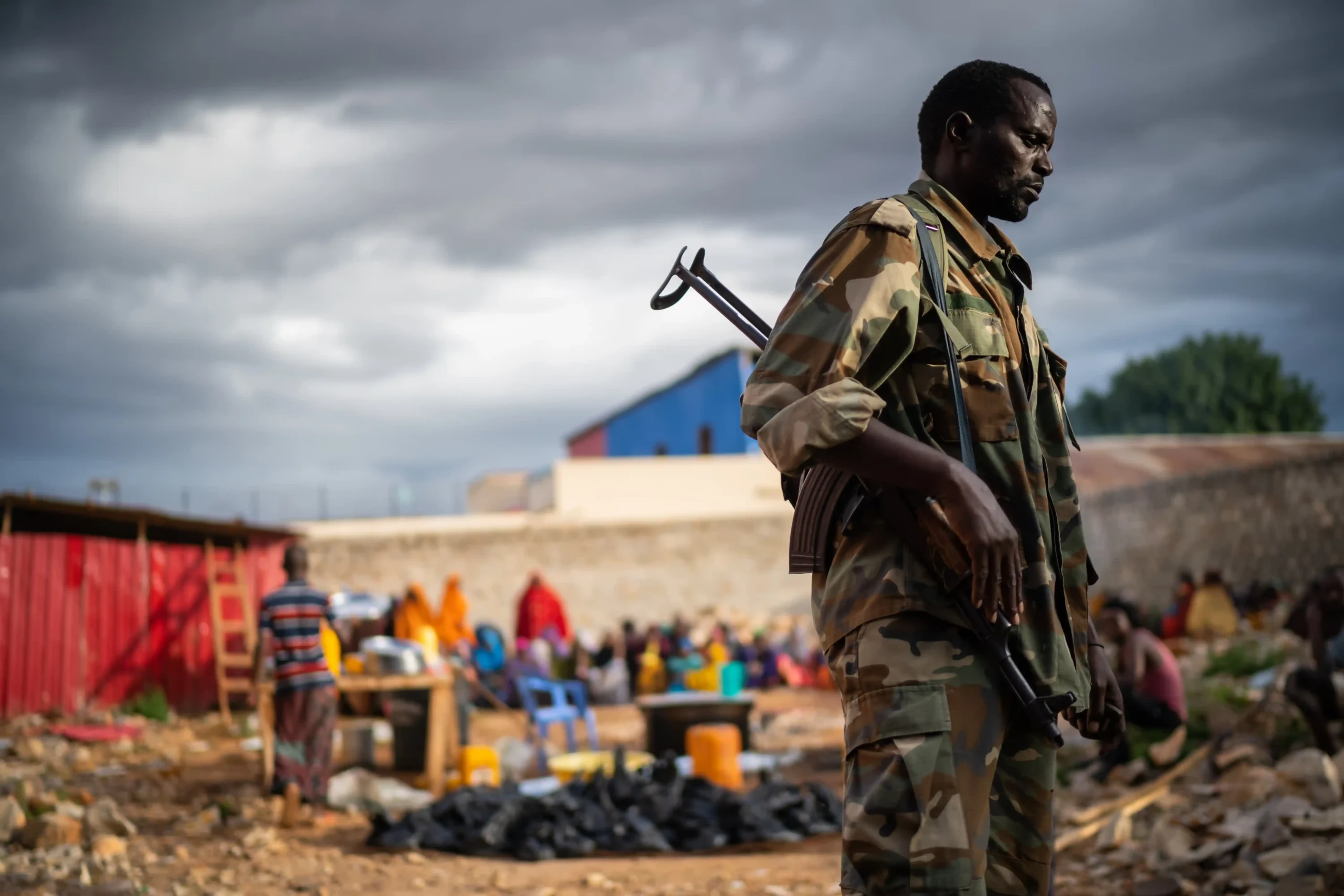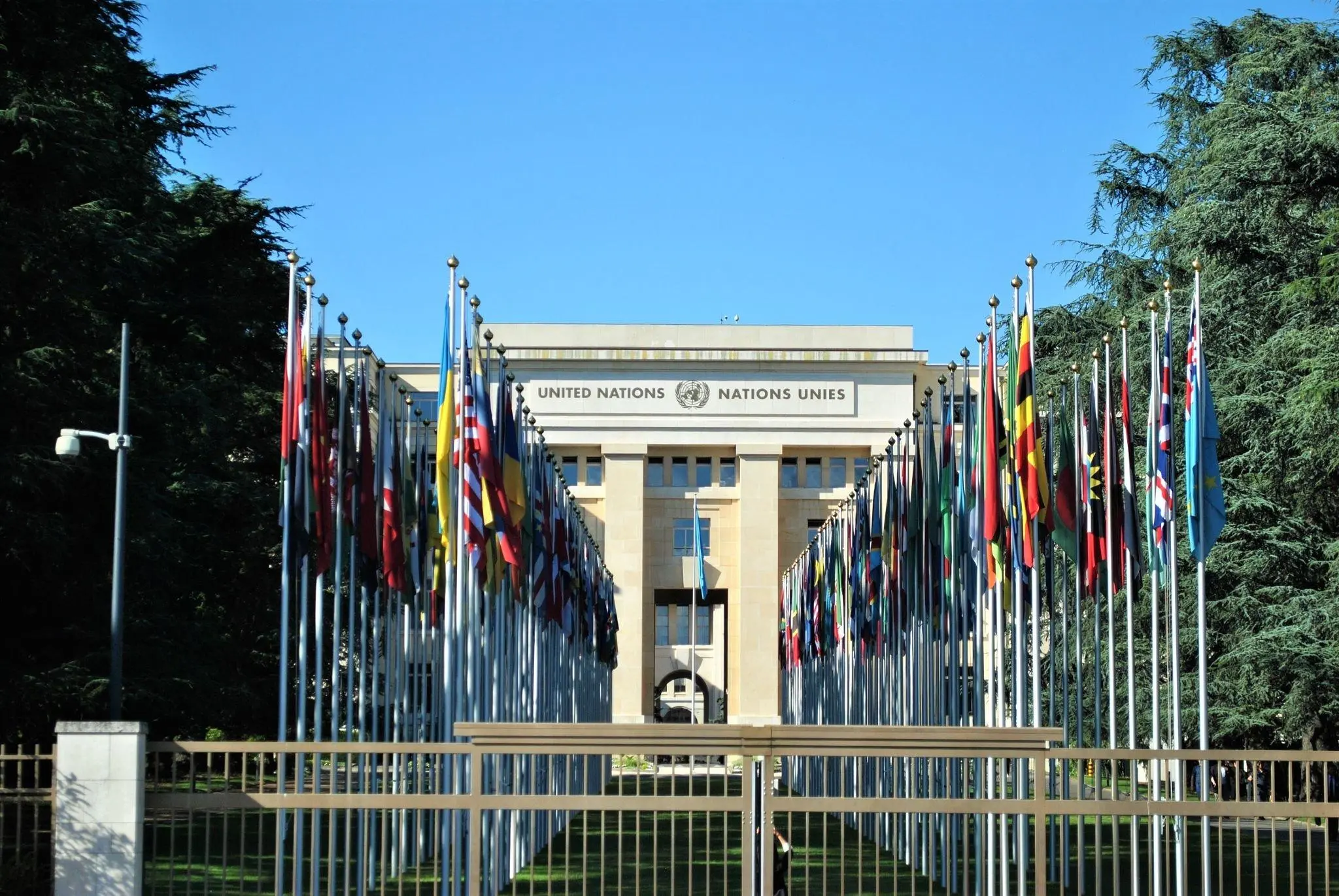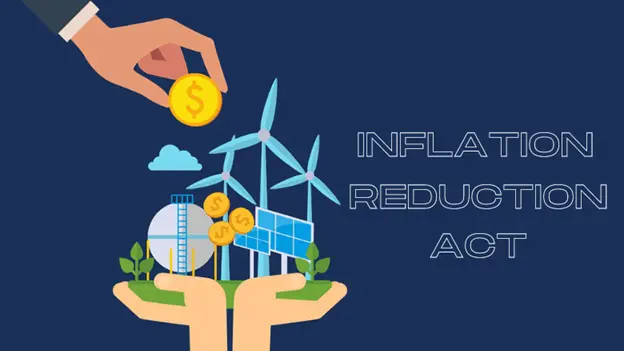Despite a 2009 pledge to mobilise $100 billion annually by 2020, this commitment remains largely unmet, hindering adaptation and mitigation efforts. The 2015 Paris Agreement, while aiming to limit global warming, faces implementation challenges due to insufficient pledges and a lack of accountability. Developed countries, bearing historical responsibility for the climate crisis, must assume a leading role in mitigation and provide adequate financial support. Unfulfilled pledges perpetuate a cycle of vulnerability in the Global South, exacerbating the impacts of extreme weather events and rising sea levels. Climate change poses a challenge to sustainable growth in a number of industries and is not just an environmental concern. It is also an economic one. Insufficient investment for climate change exacerbates problems including growing debt in developing countries, decreased agricultural productivity, food insecurity, and volatility in sectors like tourism. These issues, which are linked to global accords like the Paris Agreement, are pressing and need to be addressed.
Unmet Financial Commitments
The $100 billion climate finance commitment made by developed countries in 2009, while representing a significant step toward addressing the needs of developing countries in mitigating climate change, has been characterised by persistent shortcomings and unmet obligations. Despite achieving the headline figure in 2022, concerns remain regarding the equitable distribution of contributions, with certain high-income nations falling short of expectations. This funding gap undermines confidence in the integrity of international climate agreements and exacerbates the vulnerabilities of developing countries disproportionately impacted by the adverse effects of climate change.
Several critical factors contribute to this challenge. Firstly, the initial pledge lacked specificity regarding individual country contributions and a clear delineation of funding allocations for mitigation versus adaptation measures, hindering effective implementation and robust accountability frameworks. Secondly, the financial support requested by developing countries to fulfil their Nationally Determined Contributions under the Paris Agreement significantly surpasses the current level of available funding, with existing assistance failing to align with the articulated needs and priorities of recipient nations. Thirdly, the Green Climate Fund, established to streamline and facilitate these financial flows, encounters operational impediments, including accessibility challenges for local governments and inherent bureaucratic hurdles associated with international aid disbursement.
Further complicating the situation is the persistent challenge of accurately tracking climate finance flows. Ambiguity surrounding the definition of climate finance, particularly in differentiating adaptation aid from traditional development assistance, can lead to misreporting and an inflated perception of fulfilled commitments. The absence of standardised accounting rules for climate finance presents a significant obstacle to transparently and accurately assessing progress toward the $100 billion goal.
The implications of these unmet financial commitments are profound. Developing countries, already bearing the brunt of climate change impacts, are frequently deprived of the requisite resources to effectively adapt to and mitigate these effects. This precarious situation underscores the urgent need for a substantial increase in financial support, enhanced transparency and accountability mechanisms within the climate finance architecture, and a more equitable distribution of responsibility in confronting this global crisis. A renewed commitment to multilateralism and genuine partnership between developed and developing countries is essential to ensure that the promises made are translated into tangible action, safeguarding the planet’s future for generations to come.
Insufficient Adaptation Finance
The provision of adaptation finance to developing countries falls significantly short of the escalating needs posed by climate change. Vulnerable nations, particularly small island developing states (SIDS), face disproportionately high costs associated with extreme weather events, currently estimated at $141 billion per year. Projections indicate that these costs could surge to an alarming $1 trillion by 2030 absent adequate adaptation measures. This critical funding gap not only exacerbates existing vulnerabilities but also undermines the capacity of developing countries to build resilience against the adverse effects of climate change, jeopardising their sustainable development trajectories.
Despite the recognized need for substantial adaptation finance flows, current levels remain woefully inadequate. Estimates suggest that annual adaptation costs for developing countries could reach tens of billions of dollars, with Africa alone requiring an estimated $20 to $30 billion per year. While global adaptation finance reportedly increased from $10.1 to $28.6 billion between 2016 and 2020, this amount pales in comparison to projected needs. This stark disparity underscores a fundamental failure of the global climate finance architecture to mobilise and effectively deploy the necessary resources to support vulnerable populations.
Furthermore, the increasing reliance on private sector finance to bridge this gap raises concerns. While private investment can play a valuable complementary role, it cannot serve as a substitute for the requisite public funding to comprehensively address adaptation needs. Mobilising private sector participation necessitates the creation of an enabling environment, including clear policy frameworks, risk mitigation instruments, and innovative financial mechanisms. However, this is complicated by the persistent lack of clarity regarding the definition and scope of climate finance, leading to difficulties in accurately tracking and reporting financial flows.
Effective institutional governance is critical for the successful deployment of climate finance for adaptation. Countries with robust governance frameworks tend to attract greater climate finance, enhancing their capacity to implement adaptation strategies. Conversely, many developing countries face governance challenges that hinder their ability to access and utilise climate finance effectively. This underscores the need for international support not only in the form of financial resources but also through capacity-building initiatives to strengthen institutional frameworks in vulnerable countries.
Addressing the adaptation finance gap requires a multifaceted approach. This includes a significant increase in public funding commitments from developed countries, innovative mechanisms to leverage private sector investment, and enhanced institutional capacity in developing countries to effectively absorb and deploy financial resources. Furthermore, a clear and universally accepted definition of climate finance is essential to ensure transparency and accountability in tracking progress toward funding goals.
Lack of Clear Post-2025 Goal
The absence of a clearly defined collective goal for climate finance beyond 2025 poses a significant obstacle to effective climate action in developing countries. Without a clear post-2025 finance goal, aligning national development strategies with essential climate action becomes exceedingly difficult. This uncertainty can discourage investment in long-term climate initiatives, stifling innovation and hindering the implementation of critical adaptation measures, particularly in regions already grappling with the adverse effects of a changing climate. Furthermore, the lack of a robust framework for future climate finance commitments complicates engagement with international financial institutions and impedes efforts to attract private investment, both of which are vital for achieving national climate goals.
With the expiration of existing commitments under the Paris Agreement in 2025, including the $100 billion annual mobilisation target, the absence of a successor goal raises serious concerns about the continuity of support for developing countries. This is particularly worrying for SIDS that are disproportionately vulnerable to climate change. Furthermore, the lack of a clear post-2025 climate finance goal risks exacerbating existing inequalities in the distribution of climate finance. Evidence suggests that the effectiveness of climate finance is often contingent upon the capacity of developing countries to manage and utilise these funds effectively. Without a commitment to increased and predictable financial flows, countries with weaker institutional frameworks may struggle to access the necessary resources, further entrenching disparities in climate resilience and adaptation capabilities.
To address this challenge, the international community must prioritise the establishment of a new collective climate finance goal that extends beyond 2025. A clear and ambitious post-2025 framework is essential to maintain the momentum of global climate action, foster trust among nations, and ensure that developing countries receive the necessary support to build a resilient and sustainable future amidst a changing climate.
The broken promises of developed countries on climate finance have hampered developing countries’ ability to mitigate and adapt to climate change. As the world faces increasingly severe climate events, it is imperative for developed countries to honour their commitments and provide the necessary financial assistance to developing countries. Without concrete actions and a renewed commitment to climate finance, the goal of limiting global warming to 1.5°C remains elusive and bears economic implications for developing countries.
Economic Impact: Rising Debt and Vulnerable Sectors
The failure of developed countries to fulfil their climate finance commitments not only undermines global climate goals but also exacerbates the economic vulnerabilities of developing countries, deepening the challenges they face across critical sectors including growing debt burdens in developing countries, decreased agricultural productivity, increased food insecurity, and the destabilisation of vital sectors like tourism.
Climate Change and Debt
Rising debt burden in developing countries is one of the biggest economic effects of insufficient climate finance. For the purpose of funding climate adaptation initiatives and post-disaster rehabilitation, many of these countries are compelled to borrow money from other countries. The International Monetary Fund (IMF) highlighted that nations currently experiencing economic difficulties are less equipped to adapt to climate shocks or engage in sustainable development, stating that this expanding “climate-debt nexus” is crucial. The COVID-19 pandemic has exacerbated this issue, leaving low-income countries (LICs) grappling with inflation, economic uncertainty, and extreme poverty. Furthermore, climate-related disasters disproportionately affect LICs, making them even more susceptible to debt distress, with over half of these countries are at high risk of debt distress currently, including 23 of the most climate-vulnerable states.
Additional insights about the connection between debt distress and climate risks can be found in the World Bank’s Country Climate and Development Reports. These investigations, which include 25 countries, including 11 LICs, demonstrate that states with greater debt problems are more vulnerable to the negative economic implications of climate change. As developing countries increasingly rely on foreign loans for climate adaptation, the rising costs of borrowing further exacerbate the growing debt burden. The number of developing countries with debt above 60% of GDP almost tripled, from 22 to 59, between 2011 and 2022. The IMF reports that as of Sept. 30, 2024, 11 nations are in debt distress, 24 are at high risk, and 25 are at moderate risk of experiencing debt crisis.
The growing debt burden was highlighted by a number of African leaders at COP29 as a significant obstacle to resilience and effective climate adaption. They emphasised that the continent’s high debt levels restrict countries’ capacity to make investments in vital climate initiatives. Moreover, a significant portion of the available climate finance is given as loans rather than grants, which makes the debt situation in developing countries worse. This has sparked questions about the viability of loan-based funding schemes as opposed to grants or direct investments, particularly in light of the financial strains these countries are already experiencing.
In addition to the rising debt burden, climate change also aggravates challenges in agriculture, which puts further pressure on developing countries whose economies rely largely on farming for both economic stability and livelihoods.
Growing Threat to Agriculture and Food Security
In many developing countries, agriculture is the backbone of the economy, accounting for a sizable amount of GDP and employing a sizable workforce (42% of the workforce in Africa, for instance). Despite its heavy reliance on consistent weather, this industry is becoming more and more susceptible to climate change. Rising temperatures, extended droughts, unpredictable rainfall, and extreme weather events are disrupting agricultural systems and impacting smallholder farmers, who are crucial to the production of food. To adopt climate-resilient techniques, such as drought-tolerant crops and effective irrigation systems, these farmers require external financial and technical support. National economies become unstable and individuals are put in danger when crop failures, livestock losses, and food shortages increase in frequency.
The impact of climate change on agricultural productivity is multifaceted and varies by region. Population growth, technical development, and industrial expansion have all contributed to the loss of agricultural land and forest cover, while elevated greenhouse gas concentrations have further impeded production. In regions with already limited resources, this loss exacerbates poverty and feeds a vicious cycle of economic stagnation. During COP 29, African officials stressed that the continent is among the worst affected regions in the world, with agricultural productivity having dropped by 30% since 1961 due to climate change. African economies have yearly GDP losses of up to 5% as a result of these disruptions because of climate-related issues such coastline erosion, increasing sea levels, and diminished ecosystem resilience.
Hence, food security is also at risk since domestic agriculture is finding it difficult to keep up with growing demand. Costly food imports are a necessity for developing countries, placing a burden on their finances and increasing trade deficits. Millions of people are at risk of famine and malnutrition as a result of this reliance and the lack of climate finance. Global food production will continue to deteriorate due to climate-related weather shocks and decreasing yields, the Food and Agriculture Organization (FAO) has warned. Approximately 783 million people worldwide suffer from chronic hunger, and a 2°C increase in global temperatures might cause an additional 189 million to go hungry, while a 4°C increase could affect up to 1.8 billion people with the effects being seen most acutely in developing countries.
Addressing these challenges demands coordinated global action. As a key step at COP29, FAO and the Azerbaijan COP29 Presidency established the Baku Harmoniya Climate Initiative for Farmers. It aims to strengthen climate-resilient agrifood systems by bringing together global efforts and empowering farmers, especially women and young people. To reduce emissions, preserve biodiversity, and enhance food security, it embraces evidence-based practices, encourages climate-resilient communities, and stimulates investments. With aspirations to highlight advancements at COP30, it promotes collaboration, program mapping, and knowledge sharing via a specialised portal. Nevertheless, much more work is needed to completely address the issues that global agrifood systems are confronting.
Although food security and agricultural production are seriously threatened by climate change, its effects also extend to other important sectors, such as tourism, where local economies and travel destinations are disrupted by changing weather patterns and environmental deterioration.
Tourism Under Siege
A major contributor to GDP and a major engine of growth, the tourism sector is essential to the economy of many developing countries. Tourism can account for more than half of GDP in SIDS like the Caribbean and the Maldives. In addition to indirectly supporting other businesses like construction and agriculture, this sector generates direct revenues.
However, as threats to vital attractions like beaches, animals, and coral reefs increase, the industry is becoming more susceptible to climate change. While coastal erosion and rising sea levels endanger iconic beaches, threatening not just their natural beauty but also the livelihoods of local residents, rising sea temperatures and ocean acidification cause widespread coral bleaching. Furthermore, tourism infrastructure, such as airports, resorts, and transportation networks, can sustain significant damage from extreme weather events like hurricanes, cyclones, and floods. In addition to altering the natural environment, these disturbances damage the reputation of the impacted locations, which lowers tourist numbers and causes long-term financial losses.
Numerous sectors, such as local markets, transportation, and hospitality, are negatively impacted as tourism declines. It lowers foreign exchange profits, increases unemployment in associated sectors, and widens fiscal deficits in countries that are already having difficulty protecting themselves from climate risks and financing climate development and adaptation projects. Thus, the long-term effects of climate change are exacerbated, and leave countries with less resources to safeguard their infrastructure and tourism assets from future climatic risks. For example, the Maldives is facing an existential threat from rising sea levels to its white sand beaches, which are a key attraction for tourists from across the world. In Africa, where safaris depend on healthy ecosystems and regular animal migrations, erratic weather patterns and protracted droughts have negatively impacted wildlife-based tourism in nations like Kenya where tourism makes about 70% of its national income.
Notably, on Nov. 20, 2024, the U.N. Climate Change Conference will dedicate an entire thematic day to climate action in tourism for the first time. The event’s main focus will be on how tourism can help combat climate change, emphasising decarbonization, adaptability, and creative solutions. The Baku Declaration will be introduced, the First Ministerial Meeting on Climate Action in Tourism will take place, and the Statistical Framework for Measuring Tourism’s Environmental Impact and other instruments will be discussed.
Call for Action
Developing countries suffer grave economic repercussions when developed countries fail to meet their climate pledges, ranging from growing debt to decreased agricultural output and heightened poverty. Global leaders must confront these issues at COP29 with audacious, practical measures. First and foremost, the most climate-vulnerable countries’ debt needs to be restructured to give them the financial flexibility they need to make investments in long-term resilience and climate adaptation.
Second, to lessen the impact of climate change on food security, it is imperative that specific investments be made in agriculture-based climate solutions. Examples of these investments include financing for drought-resistant crops, effective irrigation systems, and sustainable farming methods. Lastly, to guarantee that developed countries meet their financial obligations, such as the $100 billion yearly pledge for climate funding, more robust accountability procedures need to be implemented.
Finally, to hold nations responsible for their pledges, COP29 should incorporate clear, legally enforceable procedures to monitor and enforce these financial commitments. The gap between climate pledges and actual action can be bridged by implementing these tangible measures at COP29, ensuring a more sustainable and fair future for vulnerable countries and the international community at large. As U.N. Climate Change Executive Secretary Simon Stiell stated “G20 Leaders have sent a clear message to their negotiators at COP29: do not leave Baku without a successful new finance goal. This is in every country’s clear interest, “Leaders of the world’s largest economies have also committed to driving forward financial reforms to put strong climate action within all countries’ reach. This is an essential signal, in a world plagued by debt crises and spiralling climate impacts, wrecking lives, slamming supply chains and fanning inflation in every economy.”
References
African Economic Outlook 2024, African Development Bank (African Development Bank, May 30, 2024), accessed November 20, 2024, https://www.afdb.org/en/documents/african-economic-outlook-2024
Ahairwe, P. (2023). Mobilising (european) development finance for climate adaptation and resilience. https://doi.org/10.55317/casc027
Ameli, N., Dessens, O., Winning, M., Cronin, J., Chenet, H., Drummond, P., … & Grubb, M. (2021). Higher cost of finance exacerbates a climate investment trap in developing economies. Nature Communications, 12(1). https://doi.org/10.1038/s41467-021-24305-3
At COP29, African Leaders Push for Investments and Reduced Debt Burden to Ensure Climate Justice,” United Nations Economic Commission for Africa, November 13, 2024, accessed November 19, 2024, https://www.uneca.org/eca-events/stories/cop29-african-leaders-push-investments-and-reduced-debt-burden-ensure-climate-justice
Bouteska et al., “Impacts of the Changing Climate on Agricultural Productivity and Food Security: Evidence From Ethiopia,” Journal of Cleaner Production 449 (April 10, 2024), https://www.sciencedirect.com/science/article/pii/S0959652624012411
Buhr, K., Roth, S., & Stigson, P. (2014). Climate change politics through a global pledge-and-review regime: positions among negotiators and stakeholders. Sustainability, 6(2), 794-811. https://doi.org/10.3390/su6020794
Carolyn Neunuebel, “What the World Bank’s Country Climate and Development Reports Tell Us About the Debt-Climate Nexus in Low-income Countries,” World Resources Institute, April 11, 2023, accessed November 19, 2024, https://www.wri.org/technical-perspectives/what-world-banks-country-climate-and-development-reports-tell-us-about-debt
Donner, S., Kandlikar, M., & Webber, S. (2016). Measuring and tracking the flow of climate change adaptation aid to the developing world. Environmental Research Letters, 11(5), 054006. https://doi.org/10.1088/1748-9326/11/5/054006
Eric Koons, “Sea Level Rise in the Maldives: A Nation on the Front Line,” Climate Impacts Tracker Asia, June 13, 2024, accessed November 19, 2024, https://www.climateimpactstracker.com/maldives-sea-level-rise/
Fridahl, M. and Linnér, B. (2015). Perspectives on the green climate fund: possible compromises on capitalization and balanced allocation. Climate and Development, 8(2), 105-109. https://doi.org/10.1080/17565529.2015.1040368
Ian Shine, “Rising Global Temperatures Are Already Affecting the Tourism Industry – Here’s How,” World Economic Forum, August 14, 2024, accessed November 19, 2024, https://www.weforum.org/stories/2023/08/temperatures-tourism-climate-impact/
Kifworo CM, Dube K. Wildlife Tourism and Climate Change: Perspectives on Maasai Mara National Reserve. Climate. 2024; 12(11):185. https://doi.org/10.3390/cli12110185
List of LIC DSAs for PRGT-Eligible Countries, IMF (IMF, September 30, 2024), accessed November 20, 2024, https://www.imf.org/external/pubs/ft/dsa/dsalist.pdf
Mohan, P. (2023). Financing needs to achieve nationally determined contributions under the paris agreement in caribbean small island developing states. Mitigation and Adaptation Strategies for Global Change, 28(5). https://doi.org/10.1007/s11027-023-10062-9
Mungai, E., Ndiritu, S., & Silva, I. (2021). Unlocking climate finance potential for climate adaptation: case of climate smart agricultural financing in sub Saharan Africa., 2063-2083. https://doi.org/10.1007/978-3-030-45106-6_172
Natalia Alayza, Valerie Laxton, and Carolyn Neunuebel, “Developing Countries Won’t Beat the Climate Crisis Without Tackling Rising Debt,” World Resources Institute, September 22, 2023, accessed November 19, 2024, https://www.wri.org/insights/debt-climate-action-developing-countries
Oduncular, Ç. (2024). Mind the gap between the economic effect of climate change and the reality. International Journal of Energy Studies, 9(1), 43-67. https://doi.org/10.58559/ijes.1409068
Pauw, P., Klein, R., Vellinga, P., & Biermann, F. (2015). Private finance for adaptation: do private realities meet public ambitions?. Climatic Change, 134(4), 489-503. https://doi.org/10.1007/s10584-015-1539-3
Pickering, J., Skovgaard, J., Kim, S., Roberts, J., Stadelmann, M., & Reich, H. (2015). Acting on climate finance pledges: inter-agency dynamics and relationships with aid in contributor states. World Development, 68, 149-162. https://doi.org/10.1016/j.worlddev.2014.10.033
Román, M., Arto, I., & Ansuategi, A. (2017). Why do some economies benefit more from climate finance than others? a case study on north-to-south financial flows. Economic Systems Research, 30(1), 37-60. https://doi.org/10.1080/09535314.2017.1334629
Stigson, P., Buhr, K., & Roth, S. (2013). The ambitions in Copenhagen pledges: country case studies of drivers and barriers. Greenhouse Gas Measurement and Management, 3(1-02), 21-36. https://doi.org/10.1080/20430779.2013.812010
Thwaites, J. and Bos, J. (2021). A breakdown of developed countries’ public climate finance contributions towards the $100 billion goal. WRIPUB. https://doi.org/10.46830/writn.20.00145
Together for Farmers: FAO and COP29 Presidency Launch the ‘Baku Harmoniya Climate Initiative for Farmers,’” Newsroom, November 19, 2024, accessed November 20, 2024, https://www.fao.org/newsroom/detail/fao-and-cop29-presidency-launch-baku-harmoniya-climate-initiative-19112024/en
UN Climate Change Conference Baku – November 2024,” United Nations Climate Change, accessed November 19, 2024, https://unfccc.int/cop29
UN Climate Change COP29 Thematic Day on Tourism, UN Tourism, November 20, 2024, https://www.unwto.org/events/un-climate-change-cop29-thematic-day-on-tourism
United Nations, “Five Ways the Climate Crisis Impacts Human Security | United Nations,” n.d., https://www.un.org/en/climatechange/science/climate-issues/human-security
Weikmans, R. and Roberts, J. (2017). The international climate finance accounting muddle: is there hope on the horizon?. Climate and Development, 11(2), 97-111. https://doi.org/10.1080/17565529.2017.1410087
















Comments